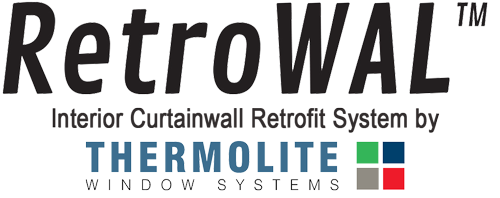The Zeroth Law of Thermodynamics states that two objects in thermal equilibrium with a third system are also in thermal equilibrium with one another. This law is the basis of temperature – temperature flows from hot to cold; therefore, when systems are in thermal equilibrium, they are at the same temperature because no heat is passing between them.
How does the zeroth law of thermodynamics affect the temperature inside of a building?
In the instance of cold outdoor temperature and warm indoor temperature, the zeroth law says that these systems are not in thermal equilibrium. This difference in temperature means that heat is indeed passing between them. Heat only flows from hot to cold, so the warm indoor air will be inclined to be released into the cold outdoors. Maintaining a comfortable indoor temperature when there are low outdoor temperatures is a naturally unwinnable battle unless precautions are taken to trap heat and prevent it from coming into contact with the cold.
Windows are the weakest link of a building in terms of heat control. This is because windows allow for undesired heat flow through three methods: conduction, convection, and radiation.
• Conduction – heat transfer through solid objects. The heat from window glass and frames indoors is passed onto the cold outside glass and frame.
• Convection – heat transfer through a medium, such as air. Indoor air can flow outside through poorly insulated windows or cracks in the frame.
• Radiation – heat transfer through space, such as from sunlight. The radiant heat from direct sunlight beaming through a window can raise indoor temperatures to uncomfortable levels.
How can the zeroth law of thermodynamics be counteracted to improve window performance?
Heat flow can be regulated through the use of properly insulated windows. Double glazed windows, in which a second piece of glass is installed, create an air gap that lessens heat loss by essentially trapping it between the glass. Triple glazing and higher are also available, and are used primarily for especially cold climates. Thermolite’s RetroWAL™ interior curtain wall retrofit system installs on the inside of existing windows, which allows single pane windows to perform at a level roughly equivalent to 3, 5, or 8 times the original level.* Utilizing an interior window system not only reduces heat loss that naturally occurs due to thermodynamics, but it also saves at least 20% on energy costs and is a much quicker and more affordable option than replacement windows.
Learn more about how Thermolite’s interior curtain wall retrofit window system could improve your building’s heating issues – contact us today for more information.
*Performance will depend on the specific RetroWAL™ product series that is used, as well as existing glass performance.
Stay up-to-date on Thermolite’s latest blog posts:
 The Thermolite engineering staff is an innovative structural, energy modelling, and implementation team that works to create unique window systems alternatives to traditional replacement windows. Our systems protect against blasts, hurricanes, and sound, while being energy efficient and quick and easy to install. We serve a wide range of industry buildings including government, military, historical, schools and universities, financial, health care, hospitality, and offices. Contact us today to learn how we could update your building’s window systems.
The Thermolite engineering staff is an innovative structural, energy modelling, and implementation team that works to create unique window systems alternatives to traditional replacement windows. Our systems protect against blasts, hurricanes, and sound, while being energy efficient and quick and easy to install. We serve a wide range of industry buildings including government, military, historical, schools and universities, financial, health care, hospitality, and offices. Contact us today to learn how we could update your building’s window systems.
References:
http://www.greenbuildingadvisor.com/blogs/dept/building-science/why-doesn-t-heat-flow-backwards



Pingback: The Zeroth Law of Thermodynamics and How It Relates to Window Performance | Thermolite Windows